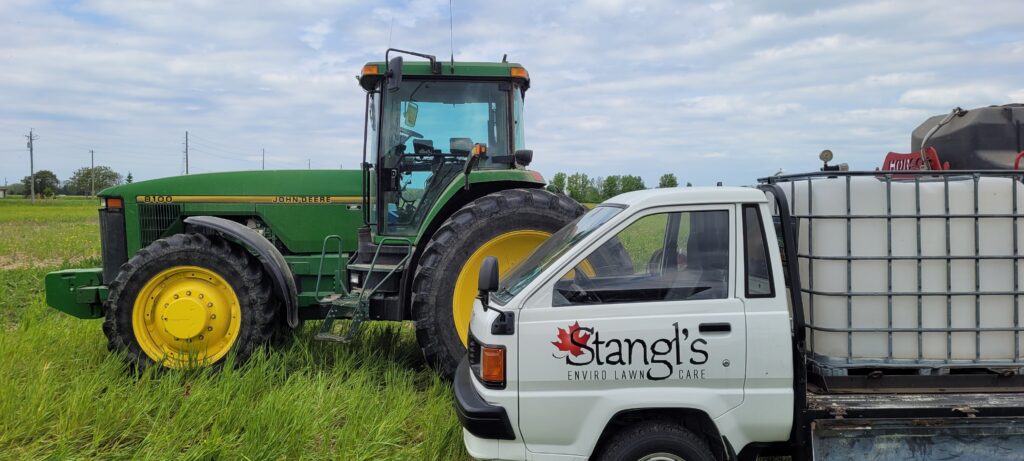The corn fertility plot at Campden Grains, spearheaded by Larry Dyck and supported by Michael Stangl of Stangl’s Enviro Lawn Care, has unfurled a tapestry of insights and possibilities in the realm of regenerative agriculture. As we delve into the results of this groundbreaking trial, we not only decipher the numbers but also unravel the implications for future practices, presenting a farmer’s perspective.
The Johnson Su Extract and Microbial Alchemy
The trial, centered around the Johnson Su (J/S) extract, accentuates the prowess of biological alchemy. Extracted from a static composting system, the J/S extract thrives on fostering fungal communities, distinguishing itself from conventional composting systems dominated by bacteria. Michael Stangl’s contribution of this biological extract sets the stage for a symbiotic dance between soil and crop.
Lactobacillus Solution (LAB): A Supporting Player
The addition of Lactobacillus Solution (LAB) into the mix adds another layer to the narrative. The LAB solution, derived from a unique process involving rice, corn, raw milk, and molasses, becomes an integral part of the regenerative symphony. LAB’s role in the trial is to complement the J/S extract, contributing to the breakdown of organic matter and enhancing soil structure.
Plot Design and Nutrient Applications
The trial encompasses various treatments, each unveiling a piece of the regenerative puzzle. From Alpine G24 to different nitrogen (N) rates and combinations of J/S and LAB, the plot design is a canvas of possibilities. The standard phosphorus-based starter program is challenged, with the objective of exploring the potential of the J/S extract to replace it.
Yield Results and Economic Considerations
The harvested yields paint a nuanced picture. The J/S extract, when applied as an in-furrow starter, performs on par with the Alpine G24, the standard in the region. However, reductions in nitrogen rates reveal a trade-off between reduced costs and potential yield loss. Economic considerations come into play, and the net effect on income becomes a crucial factor.
A Glimpse into the Future: Questions and Considerations
As we celebrate the successes of the trial, it’s imperative to cast our gaze into the future. Questions arise, beckoning further exploration:
- Impact of Missing Alpine G24: The absence of Alpine G24 in some treatments prompts an investigation into the potential savings in phosphorus and potassium.
- LAB Mixing Protocols: The specifics of LAB mixing with UAN, including timing and duration, need elucidation to refine application protocols.
- Beyond the Trial Area: Exploring the results beyond the trial area provides insights into the soil’s comparability, taking into account factors like slope, legacy effects, and environmental stressors.
- Tractor Passes and Input Reductions: Quantifying the impact on tractor passes, fuel usage, and input reductions unveils the broader sustainability aspects of the regenerative approach.
- Stressors and Crop Response: Understanding the stressors faced by the crop — be it moisture levels, drought, or pest pressures — helps tailor regenerative strategies for resilience.
- Documentation for Future Trials: Preparing for subsequent years involves considering PLFA/Haney tests, detailed documentation, and leveraging the trial’s blueprint for scaling success.
Conclusion: A Blueprint for Regenerative Success
The initial trial serves as a stepping stone into a regenerative future. Acknowledging that regenerative agriculture is a journey, not a destination, Larry Dyck and Michael Stangl pave the way for continuous learning and adaptation. As they delve into the second year of trials, these results become the cornerstone of a blueprint that could transform not just fields but entire agricultural landscapes. The journey has just begun, and the soil, enriched by microbial dance and farmer’s wisdom, holds the promise of abundance for generations to come.

Trial results: If you would like the results this is based on, please email: info@stangls.com